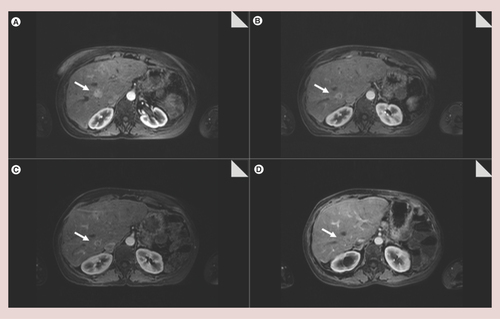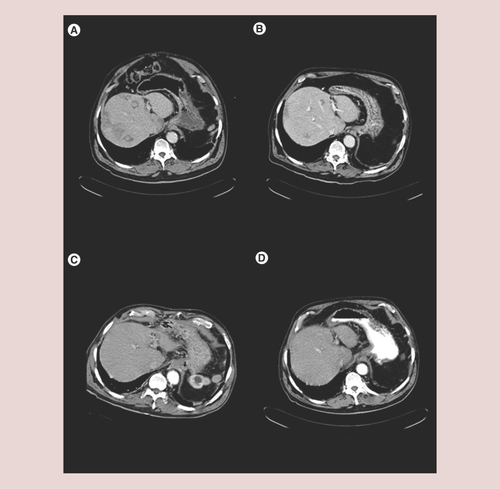Figures & data
(A) Basal. (B) 6 months after selective internal radiation therapy. (C) 12 months after selective internal radiation therapy. (D) 2 years after selective internal radiation therapy. A ring enhancement can be observed in the tumor, secondary to a decrease in intralesional vascularity.

(A) Basal. (B) 3 months after selective internal radiation therapy. (C) 6 months after selective internal radiation therapy. (D) A year after selective internal radiation therapy. A complete response is shown with no evidence of tumoral lesions. Concurrently with the radiological response, the hormonal syndrome disappeared.

